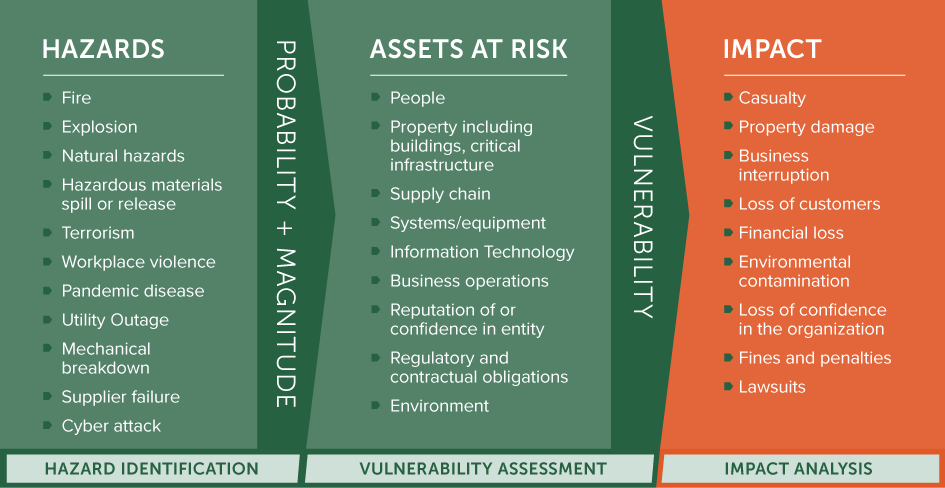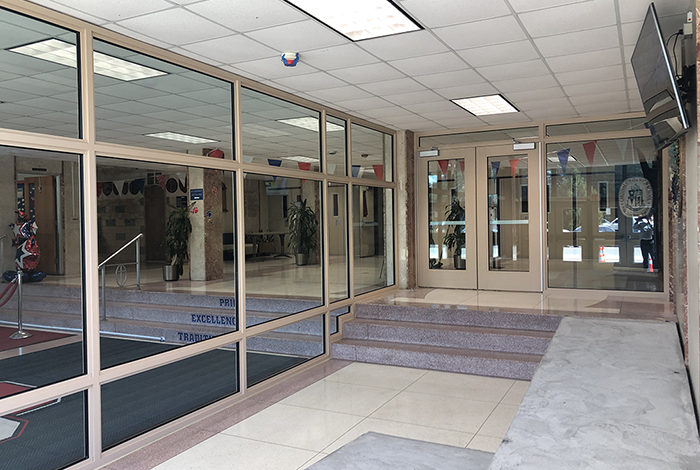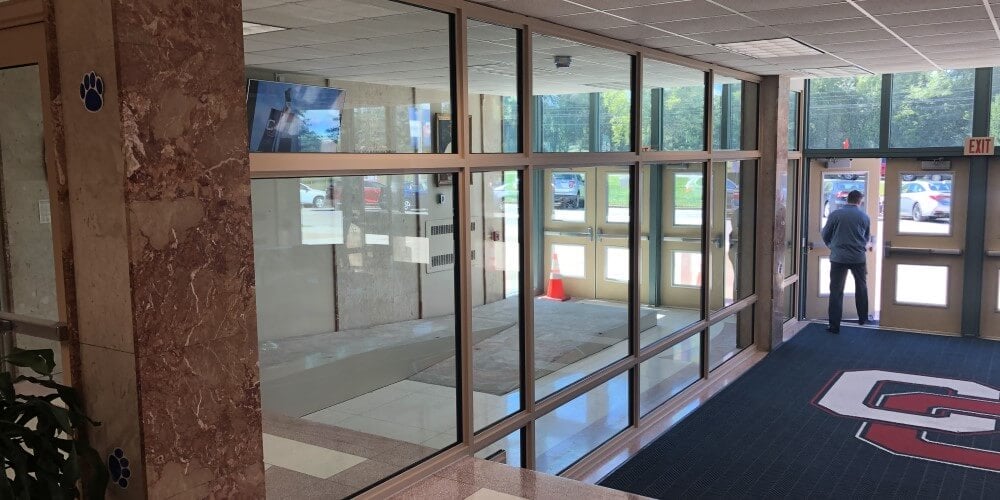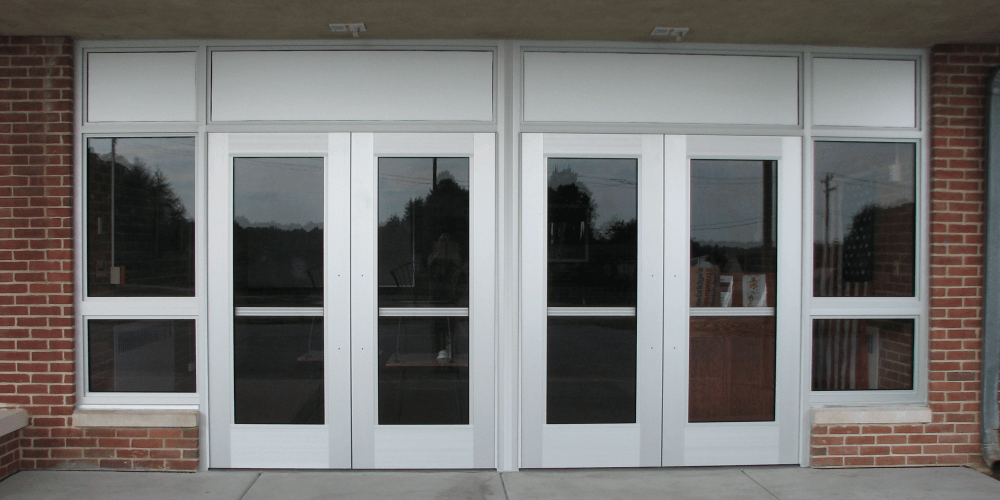Improving school security is a constant subject of public debate—even during summer break. A bill progressing through the Missouri legislature, for example, calls for bullet-resistant doors and windows on the entrance level of every school. Tennessee Governor Bill Lee signed a similar bill into law this spring requiring any school built or remodeled after July 1 of this year to have ballistic doors and windows.
That Tennessee bill seems especially likely to cause issues for some schools because a renovation being done in July of this year almost certainly began planning in September of last year—months before this new law was even introduced.
In the first week of May, Total Security Solutions CEO Jim Richards noted, "Our phone's been ringing off the hook for the last month with schools wanting to add barriers and layers of ballistic security this summer."
But Jim is quick to note that it isn't just changes in the law that are driving these calls.
"It was following that last school attack, the one that was in Nashville," he recalls. "For whatever reason that moved the needle" more than other recent school shootings. This is likely owing to the striking footage of how little protection a standard storefront-style commercial glass door—the sort used in most schools—provides against a firearm.
How to Improve School Safety
In general, any project aimed at improving security in schools should assume a 12-month planning timeline. This allows ample time to assess your school's unique strengths and challenges, hear from all the stakeholders, craft a solution that takes all of that into account, and then adjust and adapt as issues arise.
TSS always advocates a "Systems Approach" to security in schools. This is a holistic approach to building security. Instead of focusing on individual components—a door here, a window there—the Systems Approach focuses on creating a comprehensive barrier system that will reliably protect building occupants. Recall how, at Sandy Hook Elementary School (in Newtown, CT), the attacker was confronted with a locked and secured door, but defeated it by shooting out a vulnerable window next to the door. There was a critical unaddressed gap in their barrier system. Tellingly, he was not able to breach interior doors (which did not have vulnerable windows).
A Systems Approach naturally embraces the principles of All-Hazards Planning, as recommended by the Department of Homeland Security and other agencies.

Most schools rely on grant money (either from the federal government or state agencies) to pay for at least a portion of their school security upgrades. Bear in mind that, for the purpose of getting grants, you don't usually have to have a solid bid in hand. But you will need a realistic estimate of the budget. TSS's team of experts—who've handled more than 2,275 school security upgrades—can certainly help you arrive at these numbers. This free school security upgrades pre-project checklist can help make sure this conversation goes smoothly and gets you all the answers you'll need.
The Best Schedule for Improving School Security
Here's an outline of the ideal schedule for a school ballistic security project. Sticking to this schedule will minimize hassles, costs, and surprises while ensuring you open your doors in the fall with everything in place and looking good.
- September: Schedule meetings with security consultants or local law enforcement to assess physical security on your campus.
- November–December: Gather proposals and bids from construction firms, security service providers, and experts in ballistic barriers.
- January–March: Work with your design team, security team, and contractors to develop comprehensive plans and designs.
- April: Get design approval and initiate purchase orders.
- July–August: Commence installation
Jim notes that the approval step is where this schedule most often runs afoul. "There are so many different stakeholders in any school situation," Jim explains, "It's easy for paperwork to get stuck on someone's desk. When you add local building codes, state regulations, or some other requirement, plus people's individual strong beliefs about the best way to handle things in a school, there are just a lot of opportunities for something to gum up the works."
Unfortunately, slowdowns at this step also delay beginning procurement. Given ongoing supply chain issues, that can spell disaster for your schedule.

"We've done our best over the past several years to make business decisions that ensure we have what we need to get that ballistic barrier built and delivered. But if you need a specific electric lock system or want a shape or style of ballistic glass that needs to be special ordered, we can't control how long it takes for something like that to ship. It can take 16 to 18 weeks to source specialty glass and 3 to 6 months or more to get some door hardware right now."
Real Schools, Real Schedules: Scheduling Security Upgrades
As the old saying goes, "No plan survives first contact with the enemy." While the ideal schedule is what we all hope to keep, it often is not the reality of our situation.
"That would be the preferred schedule," Jim notes, "But, as I said, our phone's been ringing off the hook since April with people wanting to do stuff this summer. And we entirely understand. A lot of times there's a long period of inaction—because there are members of a school board or the community who are hesitant or because there are issues with funding. So many different reasons. But once there is that event that gets a lot of attention or the community moves past some obstacle that had them all stuck, people really want to move and move fast. We understand that."

At such a late date, is it possible to get a set of school security upgrades underway?
"Anything is possible," Jim allows. "But that delay ends up costing you, especially if you are dead set on trying to get it all done in just a few months. There are going to be hiccups."
That said, the installation itself usually takes less than four days and is often completed in a single weekend. It's entirely possible to install your security barrier at any time of year without disrupting school operations.
Ready to start planning a project? Or do you have questions about how to best approach a ballistic security upgrade for your school? Contact our ballistic security experts whenever you like.

